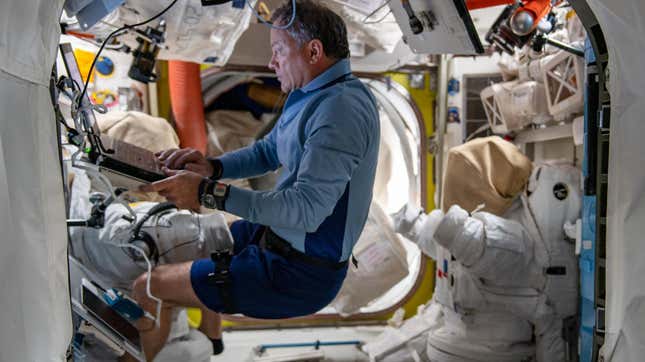
If you’re one of a few people fortunate enough to be able to afford a $55 million ticket to space, the odds are that you’re not much accustomed to hard labor. Members of the all-private crew to the International Space Station recently reflected on their journey to low Earth orbit, complaining that they had too much work to do aboard the laboratory as it circled our planet.
During a press conference on Friday, the four-man crew of Axiom Space’s Ax-1 mission admitted that they tried to fit too much into their schedules, which ended up putting a strain on them as well as on the astronaut crew that was already living and working on the station, SpaceNews reports.
“In essence, the arrival of the Axiom personnel seemed to have a larger-than-expected impact on the daily workload on the professional International Space Station crew,” said Susan Helms, a former NASA astronaut and member of the Aerospace Safety Advisory Panel, during a panel meeting on Thursday.
The crew arrived on the ISS on April 9, packing an impressive experimental payload with them that included experiments on holoportation, human cells, and high-precision optical lenses. But being that it was their first time in space, and that they are neither professional astronauts nor researchers, some of the experiments ended up taking quite a lot longer than anticipated. One experiment that was meant to take just two and a half hours based on pre-flight training ended up occupying double that amount of time, according to entrepreneur and investor Larry Connor, who was a member of the Ax-1 mission.
“Our timeline was very aggressive, especially early in the mission,” Michael López-Alegría, former NASA astronaut who commanded the mission, said. “The pace was frenetic in the beginning.”
The mission was initially meant to last for eight nights, but ended up being extended to 15 days due to unfavorable weather delays. The ISS first-timers were not complaining about spending that extra time above Earth’s atmosphere, as that allowed them to take in the extraordinary views (one of the things they surely expected for the price of admission). “It was a blessing to have the extra time,” López-Alegría said. “I think we were so focused on research and outreach in the first 8 or 10 days on orbit that we needed the extra time to complete the experience by having time to look out the window, to make contact with friends and family, to just enjoy the sensation.”
But their extended stay meant that the ISS remained cramped, what with 11 astronauts onboard. Some of the science modules only allow for four astronauts or fewer to conduct experiments at the same time, which meant that the Axiom-1 crew ended up slightly disrupting the schedules of the regular ISS astronauts.
The company is already prepping for the launch of the second crew to the ISS, having sold three seats, including one designated for an astronaut from the United Arab Emirates, on a SpaceX Crew Dragon.
Axiom Space President Michael Suffredini referred to these issues as part of a “lessons learned” discussion that the private space company was having with NASA and SpaceX following the first private crew mission to the ISS. “Over time, we’ll reduce what the crew has to do,” Suffredini said during the news conference.
More: New Video Shows Helicopter Catching Rocket Booster in Midair.